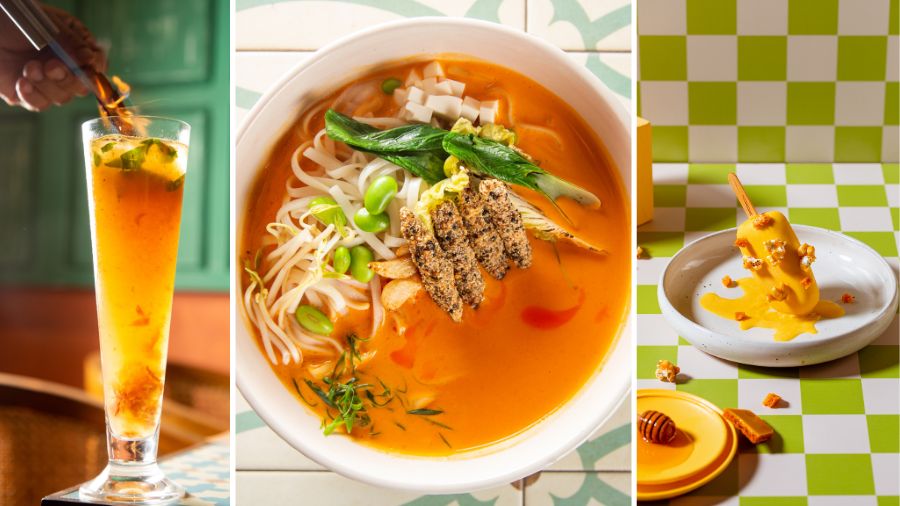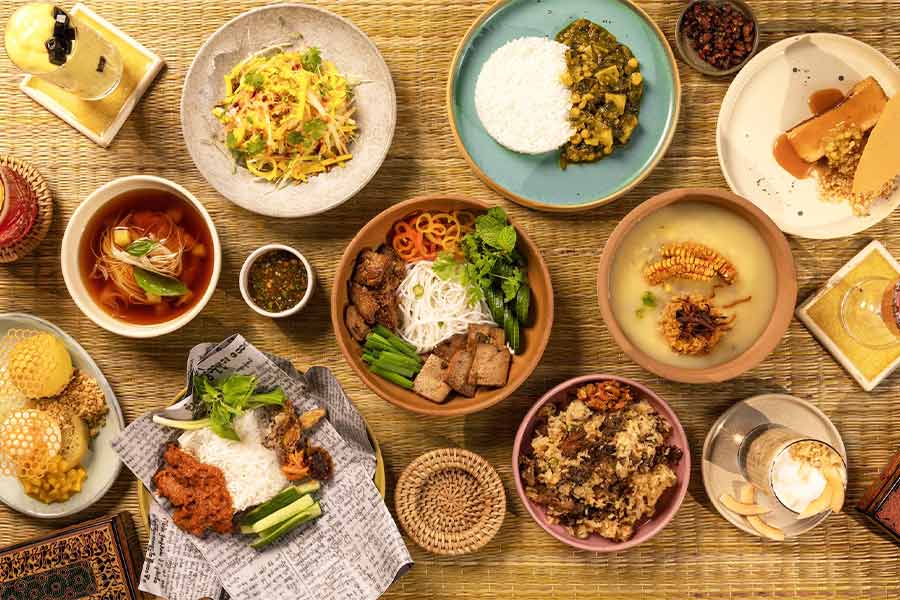In our contemporary, trend-driven restaurant landscape, where establishments mostly survive a season or two, the success of Burma Burma, which is celebrating its 10th anniversary, is nothing short of a miracle. When childhood friends Chirag Chhajer and Ankit Gupta — the latter with ties to Burma through his mother who grew up there — decided to start a Burmese restaurant in India in 2014, little could they have imagined that it would grow to be a pan-India chain of 13 outlets. It’s heartening that they stuck to their guns and did not Indianise the flavours — and that the diners embraced the offerings with open arms. But that’s not even the craziest part. This is: Burma Burma is a completely vegetarian restaurant!
Cause enough to celebrate, and Burma Burma is doing it with ‘The 10-Year Trail’ special menu. Featuring dishes from each of the seven regions of Burma, the menu is bursting with fresh flavours and healthy options. Think soups and salads, hearty mains, sumptuous desserts and refreshing coolers. The physical menu itself is like a little travelogue, with interesting bits of trivia about Burma and the featured dishes.

Burma Burma, established in 2014, has grown to be a pan-India chain of 13 outlets Ashish Kumar
There are two soups to kick off the feast and, in the interests of investigative journalism, I ordered both. While the Tar La Baw is a broth of fermented and sun-dried bamboo, infused with pounded ginger and basil, red pumpkin, slow-roasted tomato and rice vermicelli noodles, and hails from the Karen tribal community, the Sarbuthi of the Chins is a soup made with a corn husk and shiitake broth as base, thickened with maize flour, with pickled mushrooms and topped with a crispy corn fritter. While the former is light and aromatic, and bursting with umami, the latter is a heartier, more filling option. So take your pick—you won’t be disappointed in either.
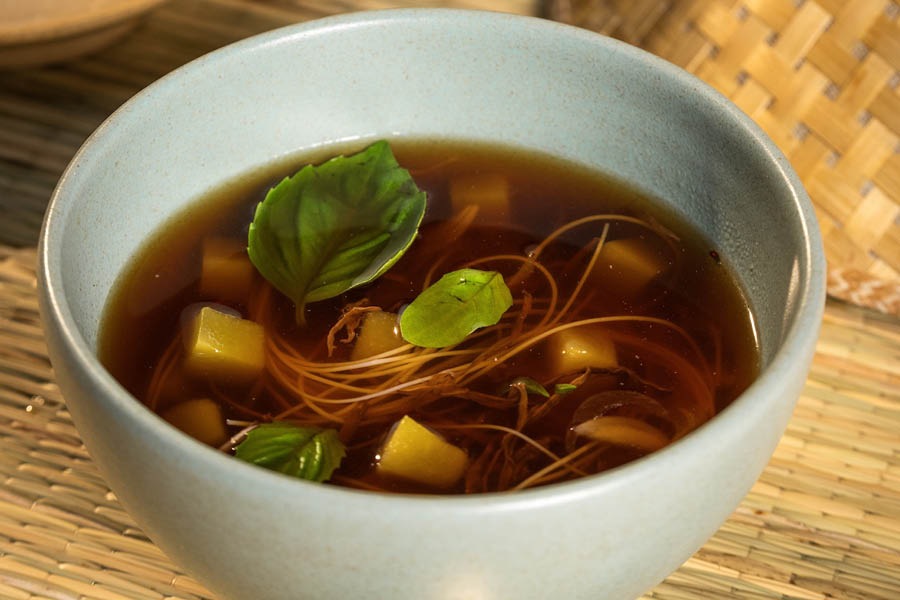
The Tar La Baw soup Ashish Kumar
The Siman Thoke salad, which comes from the Prom tribe in Burma’s Shan region, has to be one of the star dishes on the menu. This is a salad made with shreds of chickpea tohu (a kind of Burmese tofu, and uncannily similar in texture to the Gujarati khandvi) and raw papaya (making it a distant cousin of the Som Tam) tossed in a sour-and-spicy dressing — tangy and filling at the same time.
“A visit to my mom’s hometown was how we stumbled upon this dish,” says Ankit. “It was on our way to the next destination (Shan), when we spotted huge queues of people, waiting for their meal in front of an unassuming streetside hawker, which is how we discovered Siman Thoke; ever since then we’ve been waiting for a chance to feature it on our menus.” In fact, each of the salads is stellar, including the Steamed Rice Tofu Salad, which has ribbons of rice tofu tossed with coriander and shallot oil, and topped with crispy garlic and fresh herbs, with just a smidgen of chilli to add some zing.

The Steamed Rice Tofu Salad Ashish Kumar
Choosing something from the mains was tough, but I eventually settled for the intriguing Highway Meal Parcel. This comforting meal, typically wrapped in old Burmese newspapers, is based around rice, and is a lunch staple in Burma. You will find it being sold at roadside stalls across Yangon. Burma Burma’s version has steamed rice topped with a lip-smacking mock meat and potato curry, with radish pickle, cucumbers, mint and shallot salad, and mushroom chips for accompaniments. I’m so glad one of my lunch companions ordered a Split Gill Mushroom Fried Rice, which I was eyeing as well. The star ingredient in the dish is the foraged split gill mushroom, which comes from the Kachin hills. A local delicacy, the mushroom resembles undulating waves of tightly packed corals and is reputed to have medicinal qualities. Well, it’s also delicious.
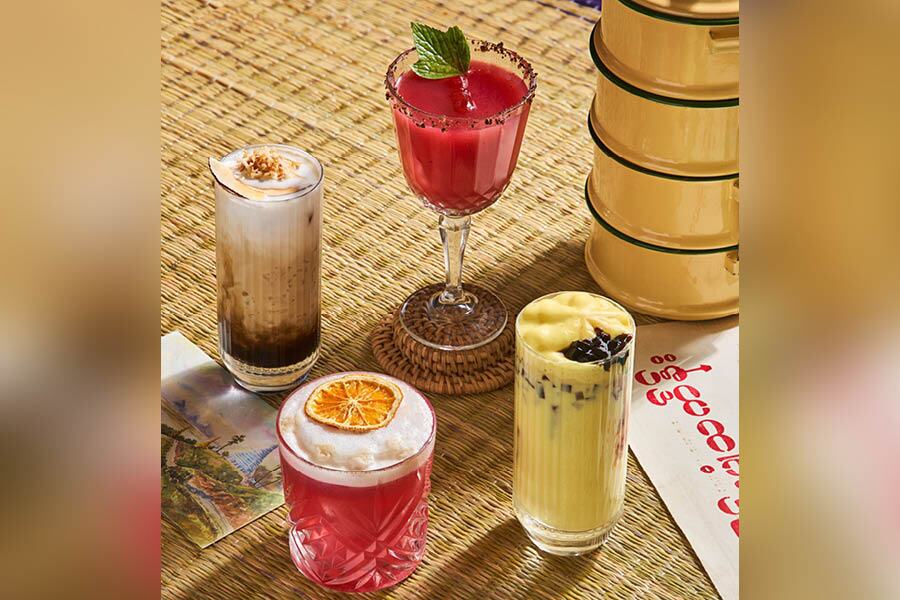
Some of the beverage options Ashish Kumar
A word on the drinks. They have some intriguing options, from the Durian Float (which I was too frightened to try, given the fruit’s odious reputation) to the Chin Gin Ley, a hibiscus tea and ginger-based drink inspired by the Rakhine region, which is arguably the best of the lot.
And then it was time for dessert. Some restaurants run out of steam by the time they get to this section, but not Burma Burma. The only conundrum is deciding which is better, the Burmese Milk Tea Cheesecake (Burmese tea-infused cheesecake, with a brown butter streusel, stewed roasted apple confit, cinnamon ice cream, topped with a cinnamon caramel and spiced tea tuile) or the Burmese Tropical Fruit Pavlova (coconut chantilly with a tropical fruit salsa and mango gel, topped with a ginger coconut ice cream and mango passion caviar, encased in a crunchy coconut meringue, served with a mango passion fruit coulis). Or is it the Citrus Tea Leaf (tea leaf financier with a lemon fermented tea foam, kaffir lime curd with a honey chantilly, topped with honey gel, almond streusel and citrus mango ice cream). Decisions, decisions… (A word of warning, though: the dessert portions are quite large, so you might want to share, however reluctantly.)
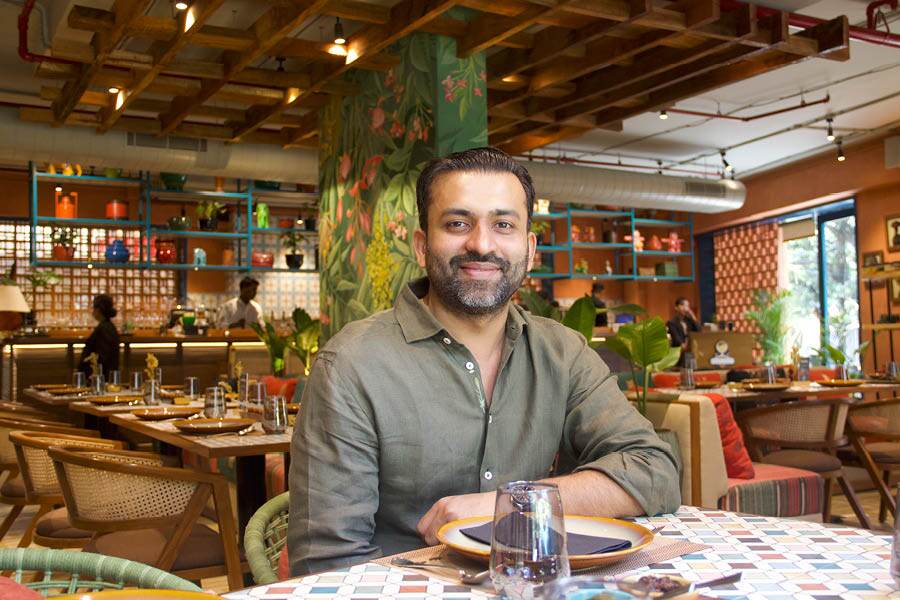
Ankit Gupta, co-founder and managing director, Burma Burma Saina Jayapal
According to Ankit, none of these dishes have been served in Burma Burma before. Burmese cuisine is the gift that keeps on giving, and I certainly hope some of them make it on to the regular menu. One of the best things about Burma Burma is that they don’t rest on their laurels. Instead, they invest in a lot of primary research with periodic culinary forays into Burma. The 10-Year Trail menu is, therefore, also a celebration of a decade of exploring Burma, and returning rich with experiences and interesting new dishes for hungry diners who can never have enough.
The ‘10-Year Trail’ dine-in menu is available at Burma Burma outlets across India, including Kolkata (Burma Burma, 18 M, Ground Floor, Stephen Court, Park Street, Kolkata – 700071; +91-99202 40097) till September 30.

